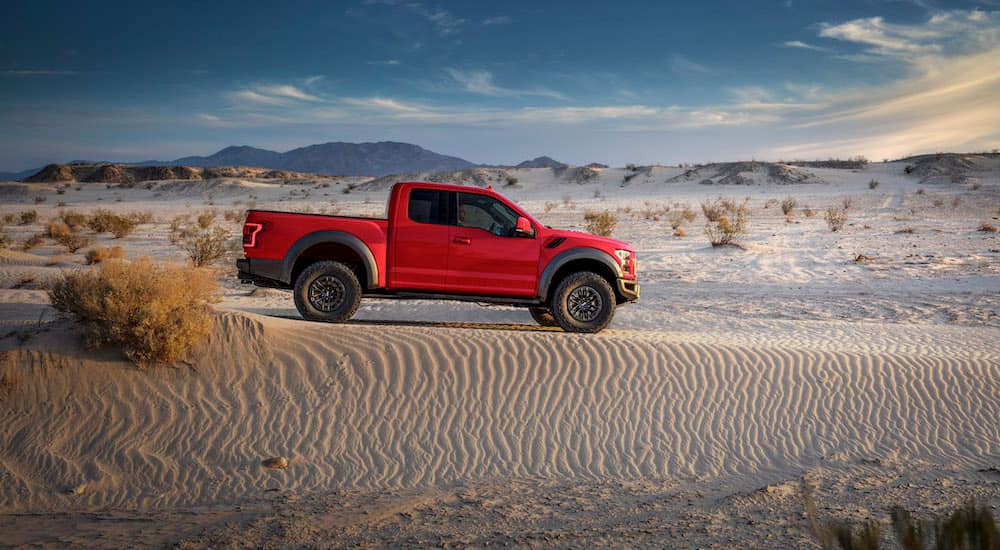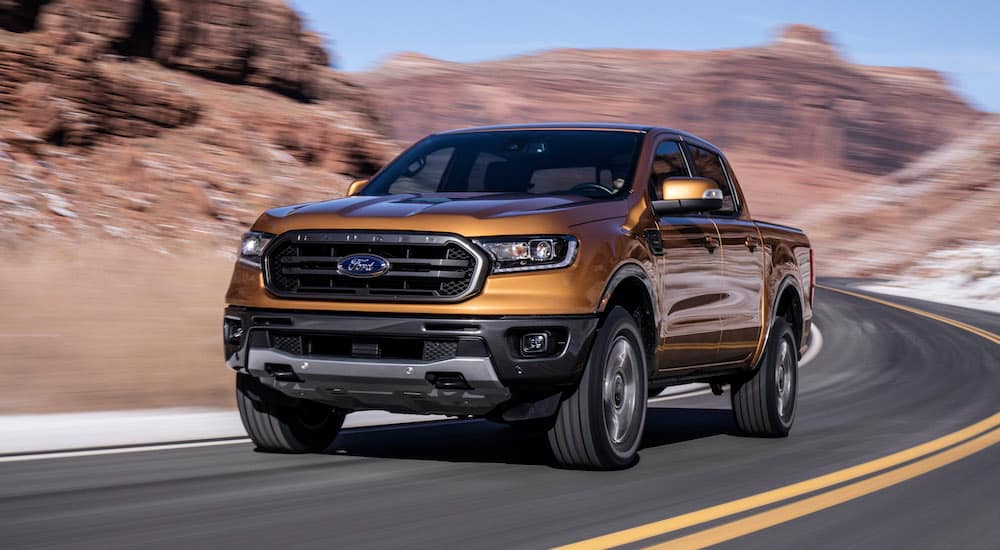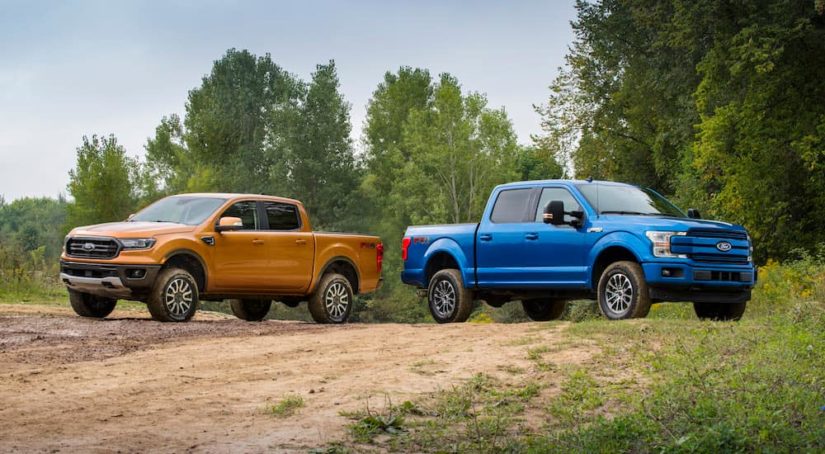On its surface, a global shortage of computer chips might not seem like an issue that would affect the average car buyer. Steel and rubber prices? Sure. Crude oil production? Of course. Worldwide lithium-ion availability? That’s sure to affect the price of electric vehicles. But semiconductors? The way we build our cars has changed a lot since the first Model T rolled off the production line 100-plus years ago, and with high-tech features becoming the norm in the automotive market, the industry has become dependent on the building blocks of such technology. With this shortage stalling production at automotive plants across the globe, used cars are becoming a more viable option than ever before, and your local used Ford dealer is here to help.
The automotive industry has ground to a virtual standstill in recent weeks, with Ford joining Volkswagen, Nissan, BMW, and Honda in imposing short-term production stoppages due to a lack of the semiconductors used in everything from in-car entertainment systems to brakes, steering, and engines. Like most everything over the last year, we can blame this all on COVID-19. The global pandemic has led to an overall slowdown in semiconductor production as factories shuttered and supply chains were interrupted. It also caused an uptick in the sale of consumer electronics as an increasingly homebound populace sought some distraction from these “unprecedented times,” creating the perfect storm for a semiconductor shortage.
The shortage is expected to last for much of 2021 as companies struggle to ramp production back up to pre-pandemic levels, and the effect on all corners of the automotive industry cannot be underestimated. Rental car companies, for example, have broken with their long-time practice of purchasing new vehicles, increasingly opting to round out their fleets with used vehicles as newer models prove too difficult to source.
Those in the market for a new Ford are sure to feel the pinch as well. In early May, the Detroit auto giant announced that production could be cut by as much as half for the coming quarter, with CFO John Lawler predicting that the shortage could well run until next year. The shortage has hit Ford particularly hard due to a fire earlier this year at the Japanese electronics company responsible for supplying many key parts manufacturers.
A predicted 1.1 million fewer vehicles will be rolling out of Ford’s factories in 2021, while demand is expected to be through the roof. Prices are already up across the board, and the average 2021/2022 vehicle is bound to cost more than any model years in recent memory. With these market forces conspiring to inflate the price of a new car, consumers have to ask themselves: is this really the year to buy a new car?

Ford’s Dependability Extends to the Used Market
For many consumers, buying a new car means just that: choosing a vehicle fresh off the assembly line with a clean slate and that all-important new car smell. For these buyers, the higher price is well worth the peace of mind that comes with being the first person behind the wheel, but the numbers are hard to ignore. According to data from the National Automobile Dealers Association, the average car buyer would save an estimated $130,000 over their lifetime if they opted for a car just three years old rather than new – and that’s not even accounting for shortage-induced price inflation.
Then there’s depreciation. Almost everyone’s heard that a new car loses 20 percent of its value as soon as it leaves the dealership, but many don’t realize that number can jump up to nearly 30 percent by the end of the vehicle’s first year on the road. With the average price of a new vehicle in the U.S. approaching $39,000, that’s nearly $12,000 out the window in just 12 months. This sort of loss might be easier to stomach in the best of times, but with a global pandemic wreaking havoc on the economy and job market, that sort of hit is felt especially hard in 2021.
Of course, some vehicles retain their value better than others. As the country’s single best-selling vehicle, it’s little surprise that the Ford F-150 does so well on the resale market. In fact, this truck has been named Kelly Blue Book’s Best Full-Size Pickup Truck every single year since that award was created. On average, the truck retains nearly 50 percent of its resale value even five years down the road, owing to its dependability and reputation as a hardworking vehicle that performs at a high level.
It’s not just the F-150. Ford has something of a knack for producing long-lasting vehicles that consumers have come to trust whether they be new or used. The Ford F-Series Super Duty, Ford Expedition, and Ford Mustang all rank near the top in their respective classes when it comes to resale value, and the Ford Transit tops its category among all vans. While these numbers speak for themselves, an informal survey will bear out the results – look around next time you’re driving down the highway, and you’re sure to notice a considerable number of late-model Fords sharing the road.
Affordable in More Ways Than One
Used cars also have the advantage of commanding lower insurance rates and registration costs. This is due to the fact that comprehensive and collision coverage is based on a car’s value and how expensive it would be to repair or replace in the event of an accident. Since used cars cost less, insuring them is also more affordable.
Another advantage of a used car is the harder-to-quantify mental health benefit. New car owners can drive themselves crazy trying to keep their vehicle in showroom condition; one acquaintance didn’t remove the paper floor mats from his new SUV for weeks. While this might be good for Armor All stockholders, it can be a real stressor for owners, who, despite their best efforts, will still lose that 30 percent of overall value in the first year. This level of stress doesn’t exist for many used car owners, who can spend considerably less time on detailing and not have to worry about flying off the handle if the kids drop a lollipop between the seats.

Used Cars are More than Just Affordable
Of course, there are a few old prejudices that need to be assessed when you start looking into used cars. We’re conditioned to think that new always equates to better, and while it’s true that automotive technology has come a long way… it hasn’t come that far lately. A newer model vehicle might have some nice creature comforts that make the driving experience easier, but the really important technological developments that make the car safer and improve performance typically change little from year to year.
You can also forget the old adage “they don’t make them like they used to” when it comes to today’s used cars. Back in the day, reaching 100,000 miles on a car was the exception – now, not reaching 100,000 miles is considered surprising. Vehicles are increasingly being built to last, with the average used vehicle now exhibiting far fewer major issues than younger vehicles did even just a decade ago.
There’s never been a better time to consider a used car, and your local used Ford dealer is a great place to start. Remember, used cars aren’t only more affordable, they also lead to less stress and are more dependable than ever before.



